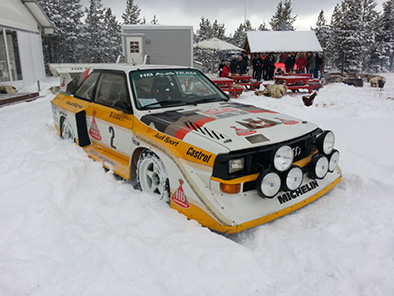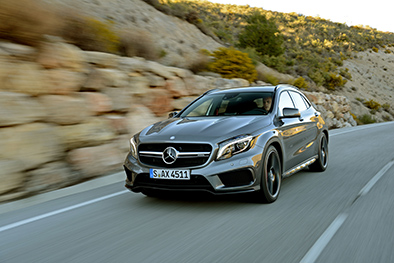 Today Blenheim Palace is the destination of choice as we attend Salon Privé. There’s huge anticipation in the air as owners of the 72 Concours entries across 17 classes make final preparations for the hotly contested Concours d’Elégance presented by Aviva, the awards for which the Best of Show will be announced this Friday. Once again, the meticulously curated selection of cars positions Salon Privé as the UK’s foremost Concours event, attracting some of the most unique and desirable cars from around the world. But this year, the event is more than just a gathering of highly-prized machinery: it embodies car makers’ endless innovation since the start of the last century, with envelope-pushing technologies seen in many of the cars on display.
Today Blenheim Palace is the destination of choice as we attend Salon Privé. There’s huge anticipation in the air as owners of the 72 Concours entries across 17 classes make final preparations for the hotly contested Concours d’Elégance presented by Aviva, the awards for which the Best of Show will be announced this Friday. Once again, the meticulously curated selection of cars positions Salon Privé as the UK’s foremost Concours event, attracting some of the most unique and desirable cars from around the world. But this year, the event is more than just a gathering of highly-prized machinery: it embodies car makers’ endless innovation since the start of the last century, with envelope-pushing technologies seen in many of the cars on display.
Starting Salon Privé’s timeline is a quartet of cars that perfectly embraced the race, to build faster and more sophisticated motor cars before the Great War. From 1903, a Berliet 20HP Closed Swing-Seat Tonneau and Knox Model C would both be ideal entrants for the London to Brighton Veteran Car Run, while a mighty 1907 Lorraine Dietrich 130HP ‘Course’, with its 16.4-litre engine, is also set to wow audiences. A Vauxhall Prince Henry 4-litre Coupe de L’Auto bookends pre-WW1 sporting development, and is acknowledged as Britain’s first production sports car.
Salon Privé’s Ferrari 75th Anniversary Class will bring together arguably the most important set of classic Ferraris ever seen in the UK, described by Salon Privé’s Chairman, Andrew Bagley, as ‘defying comparison.’ On loan from Ferrari is the very car that launched the legend: a 1947 125 S, which was the first model to be produced by the Maranello factory. Hugely advanced at the time, its 1496cc V12 engine bestowed the car with advantages in both performance and reliability, and in its first four months this 125 S won six out of the 14 races in which it was entered, the first being the Rome GP.
Keeping it company on Blenheim’s South Lawn will be another Ferrari ground-breaker in the shape of the second production 250 GTO to be built by the factory. Powered by the Tipo 168/62, 2953cc V12 from the 250 Testa Rossa, chassis 3387GT was used by Ferrari as a test and development vehicle to prove certain features used in series production.
Dovetailing perfectly with the GTO is one of the last 250 SWB’s to be produced before the new model succeeded it. But this is no ordinary SWB. Known as a SEFAC ‘Hot Rod’, it was one of a limited run of lightweight cars made in 1961 with smaller-diameter chassis tubing, a body made from exceptionally thin aluminium and a modified Testa Rossa-spec engine producing 300bhp. The car displayed at Salon Privé was driven to victory in the 1961 Tour de France.
Another of the event’s race-honed Ferrari derivatives was one of just 12 built by Maranello. The 1966 275 GTB/C – ‘C’ representing ‘Competizione Clienti – was designed for customers as a dual-purpose road and track car with much weight taken from the chassis and body, as well as a menu of engine enhancements which varied from car to car, with no two being the same.
No less rare is Salon Privé’s 275 GTS/4 ‘N.A.R.T’ Spider, one of only 10 cars ordered from the factory by renowned North American importer, Luigi Chinetti. Sister car to the same model that appeared in the 1968 film, The Thomas Crown Affair starring Steve McQueen, chassis 09751 was the 1968 New York Auto Show display car, which has since been used extensively in rallies and tours in the US and Europe, as well as achieving a second-in-class at Pebble Beach Concours last year.
Also on the showfield will be the 1961 Ferrari 250 GT SWB California Spider by Scaglietti, the only right-hand drive California Spyder ever produced in the world. An incredibly rare specimen, it was delivered new to a young Italian racing driver who believed that every Ferrari was a racing car and every racing car should be right-hand drive. It has undergone a total restoration by GTO Engineering, including returning it to its original colours, and was awarded a Ferrari ‘Red Book’ Classiche certification.
Last but not least of the Ferrari Anniversary Class highlights at Blenheim, will be a 1965 365 P, an official works competition car which notched up notable race successes – 1000km Monza and Targa Florio, to name but two – driven by the likes of John Surtees, Lorenzo Bandini and Ludovico Scarfiotti. The car was later owned by Alberto Uderzo, creator of the Asterix cartoon character, before being campaigned extensively in the European Historic Sports Car Championship.
Salon Privé is proud to host three Citroën models that perfectly embody the innovation for which the French manufacturer is known. A 1971 Citroën SM Espace, based on the SM model which resulted from the short-lived liaison between Citroën and Maserati, was effectively transformed into a convertible by French coachbuilder Heuliez. Building on the already futuristic design of the SM, the Espace used a central T-bar running between its windscreen header and rear-cabin to offer structural reinforcement, while serving as a conduit for slatted roof ‘lamellar’ sections that would retract inwards to provide open-topped motoring. Despite its patented technology, Citroën never adopted the model, which means that the example seen on Blenheim’s South Lawn will forever be a ‘what could have been’ car.
In stark contrast to the Espace is a 2CV Sahara. By fitting the 2CV’s 425cc air-cooled twin-cylinder engine in, not just the front, but the rear of the car, Citroën provided users with instant four-wheel-drive, but also the back-up of a ‘spare’ engine should one unit fail. Salon Privé’s lovingly restored 1963 example first saw service with France’s Service de Forestier, and is now one of only 27 survivors from 700 produced.
Salon Privé’s last Citroën highlight is an exceptional DS 23 Pallas IE model from 1974, the penultimate year of production. As such, not only does it incorporate all the myriad revisions and innovations that occurred through the DS’s two-decade life, but being a range-topping Pallas version it’s fitted with standard items, like the swivelling headlamps that were connected to the steering, its light beams projecting around corners.
The first of many pre-war highlights at this year’s Salon Privé Concours d’Elégance is ‘EXP4’, the last of four Bentley Motors experimental cars to be produced in the vintage period, which not only performed a vital role in proving the company’s future technology, but later enjoyed a successful racing career. Making its inaugural show appearance at Blenheim Palace, EXP4 was built in 1922 and was used by the factory to prove the then-new concept of four-wheel brakes, as well as being a test bed for the first 4 ½-litre engines. In later life, the car went on to have a successful racing career in private hands, and has recently been the subject of a sympathetic restoration by marque specialist William Medcalfe.
Another Bentley-linked Salon Privé entrant is the 1939 Lagonda Rapide V12 Drophead Coupé, the engine from which was designed by W.O. Bentley himself. Making its UK show debut after 60 years spent overseas, the 1939 model was one of only two such cars to wear James Young coachwork, and one with genuine 100mph performance. Spending much of its post-war life in Australia, the car was restored recently and achieved a first-in-class at Pebble Beach Concours in 2018.
Perhaps vying for buyers’ affection with the Lagonda in period would have been the spectacular 1938 Alfa Romeo 6C 2300 B Mille Miglia, with coachwork by Graber, that’ll grace Blenheim’s South Lawn tomorrow. Alfa made just 107 of the more powerful Mille Miglia versions of the car, and chassis 815045 is the sole survivor of four convertibles made by Swiss coachbuilder Graber.
Of course, any Salon Privé Concours would not be complete without a selection of the most desirable Rolls-Royce models from the pre-war period, and this year’s event is no exception. A 1933 Phantom III Continental Drophead, with coachwork by James Young and a near-100mph top speed, was one of just 156 RHD cars built. It was designed as a nod to the enthusiast owner-driver, and Salon Privé’s car has certainly lived up to expectations, having just returned from a tour between Bavaria and Budapest.
Keeping it company will be a 1929 Rolls-Royce ‘Twenty’ Three-Position Cabriolet that has also seen extensive use through its life – both in the UK and the US. With coachwork by Windover, and powered by an inline 3127cc ‘six’, this Twenty could be converted from an open tourer to a formal saloon, when it could then be configured with or without an internal division. ‘Jenny’, as the car’s affectionately known, retains its original powertrain and has just undergone an extensive three-year restoration.
Three more pre-war Rolls-Royces are also set to prove popular with Salon Privé’s audiences tomorrow. All from Lord Bamford’s collection, the trio illustrates the breadth of coach-built styles that were available to owners from new, with a Phantom II by Freestone and Webb, and two Phantom IIIs, one a Special Henley Coupé by Inskip, the other a Sports Cabriolet by Vanvooren.
A trio of rare and beautiful coupés from both sides of the Atlantic, split between two classes, are guaranteed to draw attention when Salon Privé opens tomorrow. First highlight is a spectacular 1955 Fiat 8V Berlinetta, with coachwork by Vignale. Created by Fiat under the auspices of legendary engineer Dante Giacosa, the 8V, with its 1996cc V8 engine and 118mph performance, became a favourite with enthusiast drivers on road and track. No surprise, then, that Salon Privé’s car was originally ordered by its first Italian owner with a specification suitable for the ’55 Mille Miglia, which he entered, but never finished in. All the same, this car would have shared the same start line as Stirling Moss and Dennis Jenkinson that year, before the famous pair went on to win the race in the Mercedes 300 SLR. The 8V appears in Salon Privé’s Post War Closed Class.
Two more coupés, both from Chrysler, perhaps confound our expectation of traditional 50’s American car design. The first, a 1953 GS-1 Special Coupé, combined sophisticated European styling with the V8 might of an all-American V8 powertrain in one of the decade’s most dramatic, low-volume production cars. Based on a Virgil Exner ‘Idea Car’ concept, the GS-1 was a limited production ‘halo’ car, built by Turin’s Carrozzeria Ghia, but with an all-American 5.4-litre V8 engine. Conceived purely for the European market, Salon Privé’s GS-1 ended up in the US and was in long-term ownership, before being recently restored to its former glory.
The Style Setters’ other highlight – a 1956 Chrysler Boano Coupé Speciale – was also produced in Italy, though still using a US-built chassis and powertrain. The car was ordered by Fiat’s vice president Gianni Agnelli and penned by ex-Ghia designer Mario Boano at his behest. However, by the time the car was almost complete, Agnelli was being considered for Fiat’s top job and the thought of him being seen driving a rival company’s product was unacceptable. He gifted the car to his brother, after which it remained in France for many years. In 2018 a ‘forensic Concours restoration’ was undertaken in the US, resulting in a second-in-class award at Pebble Beach in 2019.
The Concours d’Elégance presented by Aviva is the traditional curtain-raiser for Salon Privé Week, and this year takes place from Wednesday 31 August to Friday 2 September.

































